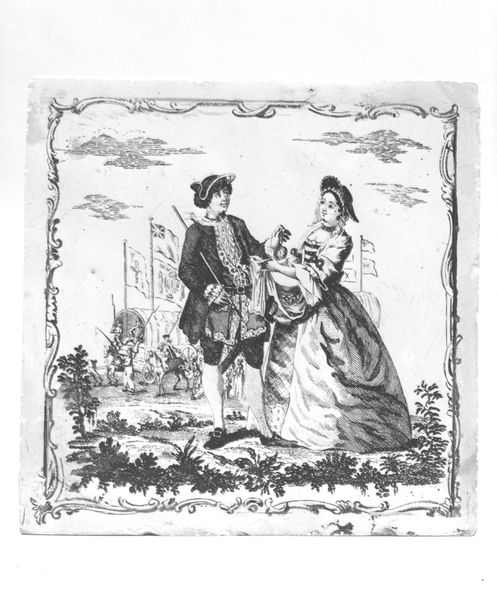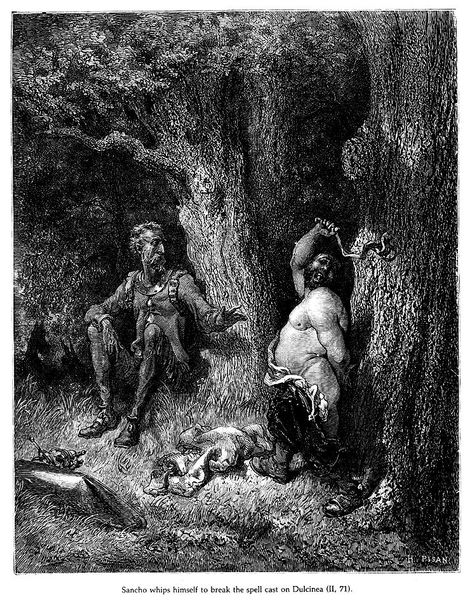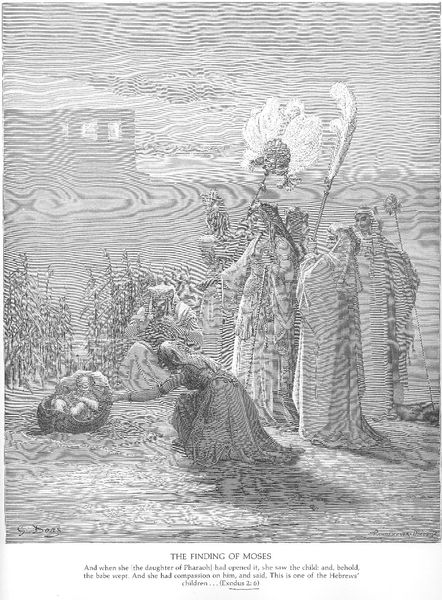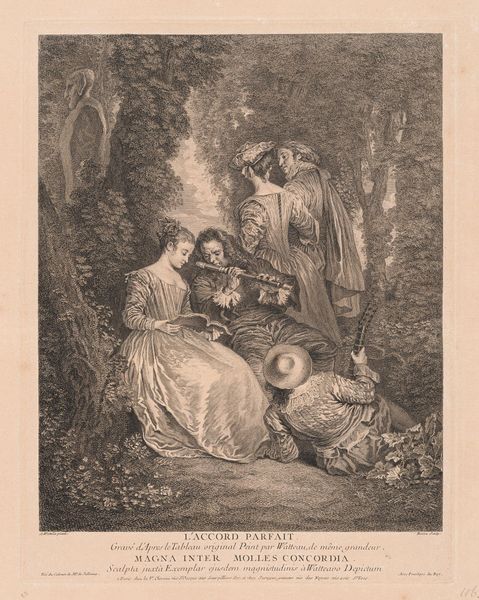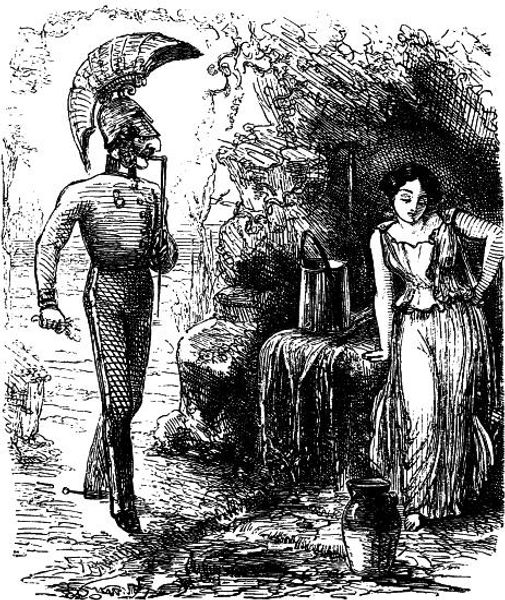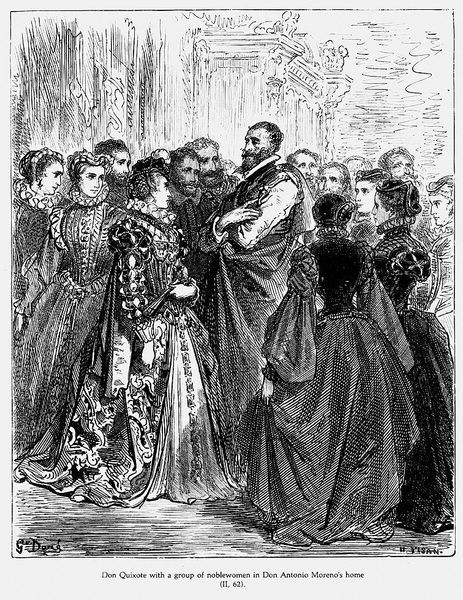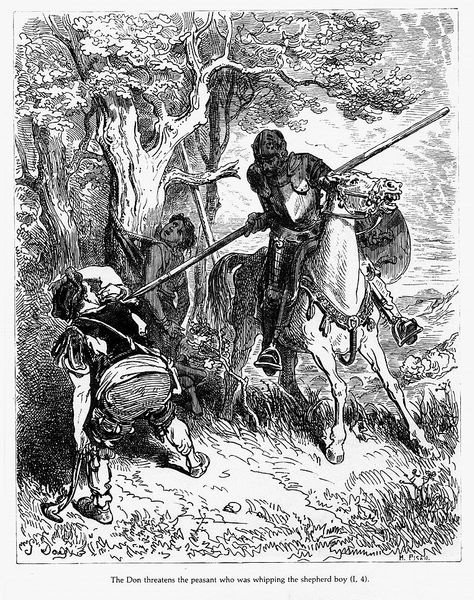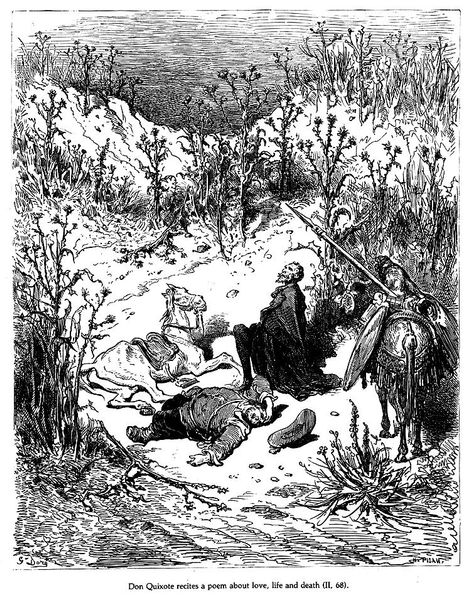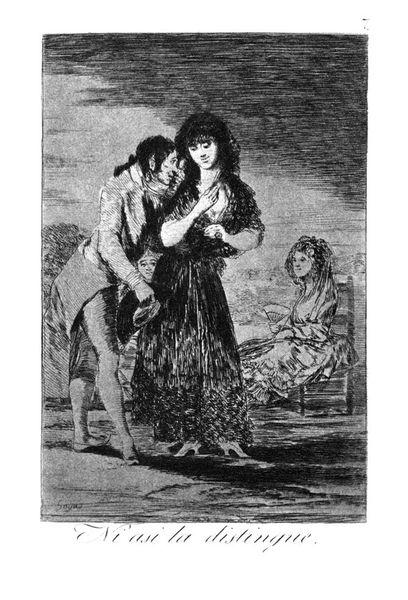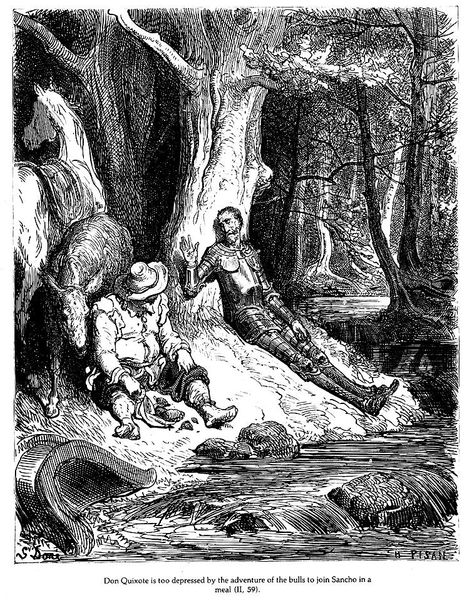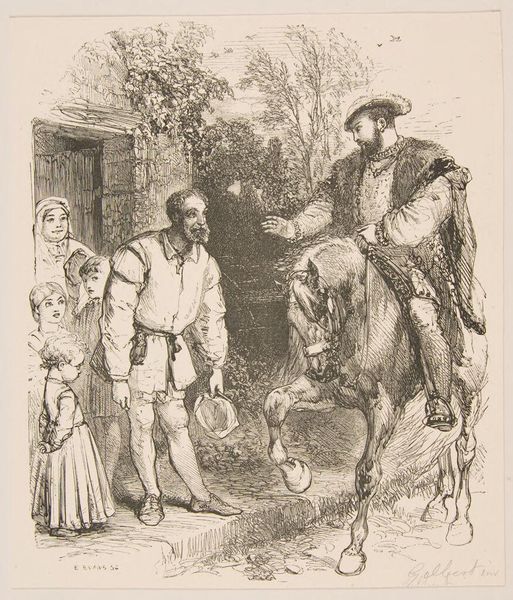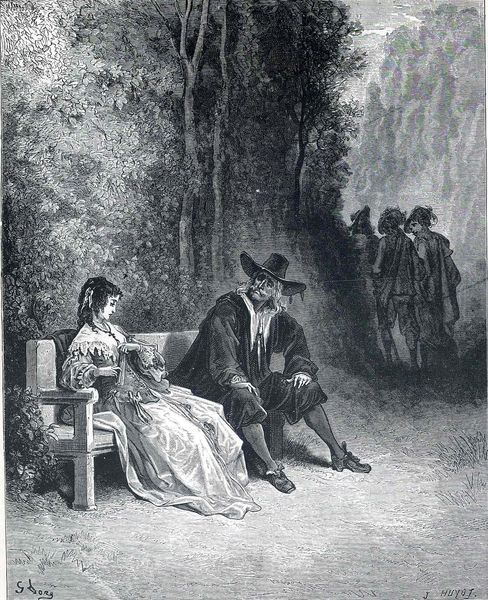
drawing, photography, pen
#
drawing
#
narrative-art
#
pen illustration
#
landscape
#
figuration
#
photography
#
romanticism
#
pen
#
genre-painting
#
history-painting
Copyright: Public domain
Curator: I'm struck by the theatricality of this piece. Before we dive into it, Editor, what’s your immediate read? Editor: There's a strong sense of entrapment, both literal and metaphorical, woven into the dense lines of the pen illustration, not to mention the somewhat disturbing image of a bound Don Quixote stuck in the tree above. Curator: This is Gustave Dore’s "Don Quixote". While not dated, it typifies Dore’s romantic era illustrations. It utilizes pen to depict the deluded knight ensnared. I see it as a visual commentary on class and perceived reality. We see the landed gentry "slumming" as Sheppardesses acting out a fantasy for entertainment, while also making a prisoner out of someone clearly struggling with delusions of grandeur and wealth. What’s your interpretation of the key symbols and imagery? Editor: I see the net itself as a prominent symbol, not just as physical restraint but also as a barrier between Quixote’s fantasy and the supposed 'reality' presented by these mocking women. Their adornments are significant, hinting at masquerade and the ephemeral nature of identities people play with across history. Even the plants evoke the era and the complex, overlapping nature of humanity, literally at his feet but figuratively towering above him. Curator: I think Dore skillfully captures the novel's themes of illusion and societal critique through that performative aspect of this moment. The Shepherdesses' clothing, their poses—everything is carefully constructed to reinforce a specific narrative that belittles Quixote and holds up their own sense of superiority in contrast. And note that no one is there to liberate him, everyone seems invested in Quixote's torment as a tool. It is deeply upsetting when examined in contrast with the source text. Editor: Absolutely. The enduring appeal of Don Quixote lies, in part, in its exploration of how symbols can be both powerful and incredibly fragile. What it all suggests is humanity's perpetual desire to act and to become entangled in layers of symbolic meaning, be that gender roles, class status, or other constructed forms. This piece really is a perfect encapsulation of the performative nature of all life. Curator: Considering Don Quixote’s enduring relevance, Dore’s image provides a powerful reminder of how social structures can be both entertaining and oppressively isolating. Editor: It makes you question how the narratives of art can shape our perception of both history and humanity.
Comments
No comments
Be the first to comment and join the conversation on the ultimate creative platform.

